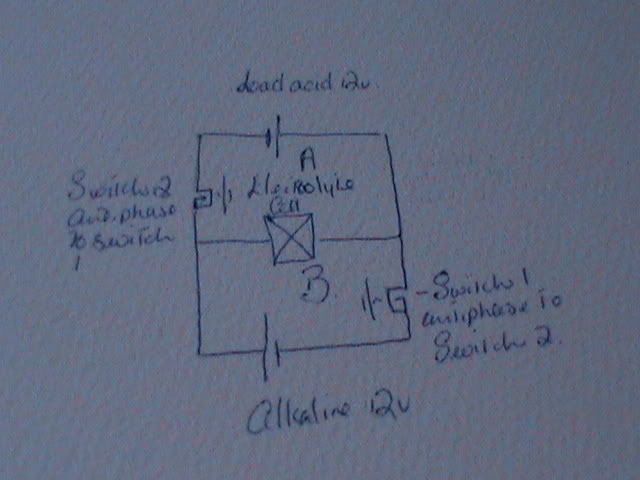
Farrah, Here's that closed battery circuit I proposed. It's quite a brain teaser. I'm assuming that the lead acid will recharge the alkaline and vice versa. Therefore - during each switching process - under open circuit conditions the path flow would offer some form of closed circuit condition and therefore would always recharge each other in the process of their discharge. And yet allow a current flow? Can't quite work it out and it gets quite complex. Anyway. Just an idea. Just utterly intrigued with the 'closed circuit' proposal you made.
Actually I think I need to add two more switches at the negative rail of both batteries to get this effect. it's a work in progress. LOL
 is that confusing or what?
is that confusing or what?


 .
.
Comment